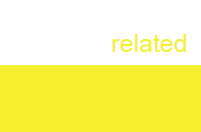news
works
archive
texts
contact
#tropical modernism
2017 | Oslo
Los Angeles
related
press
production
Bo Bardi
Burle Marx
Niemeyer

I investigate into the process of origination and decay of architecture and put this in relation to the formal qualities of modernist paintings.
For my silk-screen prints on glass I extract spaces from photographs, often taken with a five-by-four camera and transfer them into glass. The reflective medium allows the real space to interact with the represented, architectural space printed on it, plus the space behind the picture, which is usually excluded.
By using highly reflective glass as an image carrier, I avoid the fixedness of a photographic image and the idea of an image as a window in the Renaissance or Albertian sense. My desire is to work with a somehow fluid concept of geometry.
It's an almost morphological transformation, in which a static object achieves the quality of becoming ambiguous and unstable. The play of light brings in the cinematic aspect of filmic sequences, and the distilled frames become multipliers that confuse perception and space, according to the movements of the viewer. The overall effect results from both materiality and cultural techniques of scaling.
My current project “Tropical Modernism” allows me to examine Brazilian Modernist buildings of Bo Bardi, Artigas, Burle Marx and Niemeyer but also to focus on abandoned places where nature is taking over again. Remnants of almost forgotten
social utopias they at the same time show today’s total loss of political, utopian architectural manifestations.
Architecture is inevitably a projection of a two-dimensional plain into a 3-D space while painting is always the projection of space onto a plain surface—the back-projection of something three-dimensional onto a two-dimensional surface.
My fields of exploration are the infinite possible contingencies, offered by the dialectics of transferring three-dimensional spaces into a two-dimensional image and then retransferring and bringing them back into real existing spaces of architecture.
Veronika Kellndorfer, April 2017